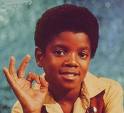Some of the most wrenching and difficult issues for us humans to resolve occur in circumstances near the end of life. The animal world has, I think, a pragmatic approach to leaving the crippled zebra behind for the lions as the rest of the herd runs away. It’s not so easy for us. It’s important to bring these difficult issues out into the open air. The current world of medical ethics continues to do an excellent job of figuring out what the issues are and helping the rest of us find rational ways of looking at these problems.
I did a search on PubMed, the National Library of Medicine online medical research reference source. I searched:
ethics AND death
and got 12,416 publications.
In pediatrics, there are grave and important decisions to make when babies are born with such severe developmental problems that their survival is in doubt. How much should we do? What interventions truly help this baby, and what interventions just prolong the suffering? Should we treat every such afflicted baby the same, or will it matter what State the baby is in, or what doctor it has? There’s a lot of healthy discussion in the bioethics world about babies on the edge of viability.
Likewise, it is partially to the credit of bioethicists that we now have ‘living wills’ and ‘advance directives’ which can guide our loved ones and caregivers if we cannot. This is a genuine advance in medical care, and has prevented a lot of suffering. (More on this in a later post.)
Despite this help with some of our most difficult choices in life, the bioethics field, in some ways, has chosen the easiest path. It’s true that one thing we all have in common is our mortality. Perhaps we also share a reluctance to deal with it, talk about it, and plan for it. About 65% of Americans die without a will.
This is the easy path because there are no right answers. The case will eventually end in a concrete way. Was the right thing done? Academically speaking, it doesn’t matter, since the focus will have shifted to the next edge-of-survival case.
I’ll say again that I’m glad that smart, literate people are concentrating on this. If I were ever pregnant with a severe brain injury and a fetus hovering at the age of survival, separated from my husband and father of this fetus but with a new live-in partner who doesn’t get along with my parents who are divorced because one of them is a fundamentalist believing in predestination and eternal afterlife so thinking that my demise will result in relief from suffering and ascent in grace and the other a devout believer in the sanctity of all life who insists that every possible intervention should be exhausted, then I’m sure I’d be happy there was an Ethics Committee at the hospital. That way, the burden would not fall on just one doctor to populate the daytime talk shows.
In fact, these cases do occur, and they highlight important topics we might never have thought of.
But they aren’t common. It’s also an easy path for professional bioethicists precisely because the situations are so vanishingly rare. The very fact that a medical case has  made it onto the news, that bioethics bloggers are blogging about it, means a priori that it’s a rare bird. For every case like this, there must be thousands and thousands of problems that occur every day for which doctors receive no guidance but their own gut feel. There are ethical questions that arise every day, but publications and debates on these issues are few. Nobody gets interviewed on TV for this.
made it onto the news, that bioethics bloggers are blogging about it, means a priori that it’s a rare bird. For every case like this, there must be thousands and thousands of problems that occur every day for which doctors receive no guidance but their own gut feel. There are ethical questions that arise every day, but publications and debates on these issues are few. Nobody gets interviewed on TV for this.
Hank, a very bright 15-year-old patient, came to my office a few months ago to talk to me. He was sent by his mother because his unstable moods and erratic actions were a serious problem for him both at home and at school. His parents were divorced, and both had new partners. He came to the office by public transportation, after school. After we talked about what had been going on, I told him I thought he needed a mood-stabilizing medication. He thought that would be OK, and we talked about possible side effects. I asked him explicitly if he would be willing to try the medication, and take it just as prescribed. He said he would, but only if I didn’t tell his mother.
Though he moved between his father’s and mother’s homes, he was aware of differences in his life at each place. Mom had better food, a well-stocked refrigerator, and was easy-going about bedtimes and curfews. Dad had better video and video games, and was more lenient about computer access but stricter about curfew. His mother, he told me, had sometimes used his previous medications as a threat or as a crutch to explain his behavior. She’d say ‘you need a higher dose’ or ‘I liked you better when you were on….’ This hurt his feelings. If he was arguing with her, he figured, maybe there was a good reason for it. Maybe she was actually wrong about something. His dad never did this. As he told me this, he was completely calm and rational. I believed every bit of his description—and I thought he was right.
- Should I have seen him without a parent there in the office?
- Are there topics of discussion that are off-limits?
- Should I insist on telling his mother?
- What if his mother calls and asks me what we talked about? Am I required to tell her the substance of our conversation?
- What if she asks about my diagnosis and plan for him? Doesn’t she have a right to know that?
- What will happen to my relationship of trust with this teenager if I say I won’t tell his mother but then I do?
- What will happen to the teenager’s care if he stops trusting his doctor? He is my patient. I am responsible for his care. What’s best for him?
- If I tell the father, and he pays for and picks up the medication, is he obligated to tell the mother (with whom he hardly ever speaks)?
- If I want to monitor the patient once on medication, I will want him to return weekly for at least the first few weeks on medication. Who makes these appointments? Do I have to cover up the fact that the kid was even seen?
- Even if I agree not to tell his mother, do I lie to her? If she asks if her child is on medication, do I say no? (OK, this is an easy one, since I am not willing to lie.)
- In fact, California law does permit a minor to consent for certain mental health services without a parent. Other states vary, but many have similar provisions.
These are just some of the questions that arise from this one actual encounter.
From this single visit, the questions, I think, can be grouped as follows:
- What are the doctor’s legal obligations?
- Of the legal obligations, which are subject to interpretation and judgment? (Would my license be in danger if I did tell the parent, but not for a day or two?)
- What are my obligations to the patient?
- Do these obligation vary by chronological age?
- What about developmental maturity? (Surely a mature 12-year-old should have more autonomy than an immature teenager?)
- Are the obligations to the patient more important than the obligations to the parent?
- What should I write in his chart? Should I document things he tells me that he doesn’t want a parent to know when they can request the chart at any time?
- Is this mix of obligations changed when medication is involved? Is it changed when psychotropic medication is involved, as opposed to antibiotics, for example?
I did a search on PubMed, the National Library of Medicine online medical research reference source. I searched:
ethics AND “primary care”
and got 837 publications. That’s about 1/15th as many as when I searched for 'ethics AND death.' I know the situations I’m in are common and happen every day, to me and thousands of doctors.
Of course this is the tip of a very big iceberg. There will be more dispatches from this ice field soon.
Epilogue: Here's what I did. I took the time to convince him to inform his mother. I told him that if he didn't and she found out he was on medication--and the chances were good that she'd find out somehow--she could use against him the fact that he wasn't honest with her. She could also stop trusting me, as part of this deception. That could change his access to me. I offered to call her directly, and explain in medical terms why I thought medication was a good idea at this time. Hank liked this and jumped on it. I told him that the next time she said something about his medication that he didn't like, he should say "Talk to Dr. Wolffe," and not argue with her about it. I would contact him directly and keep him informed about any conversations I have with either of his parents about his medication. I got a portable phone and took it into the exam room. I called his mother right then, with him there, and told her that I'd like him to start some medication. She was OK with that. Hank was visibly relieved.
















































